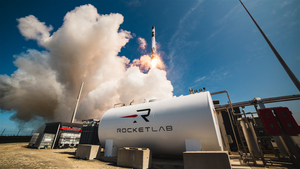
Sneaky, secret, unknown ailments strike fear into the hearts of the bravest. And we live at a time when these nasty illnesses pop up.
These mutated diseases defy the power of antibiotics. Are illnesses really mutating so fast that we can’t stay ahead of them? It appears that these devils have an edge on us. In some cases, illnesses do mutate faster than the medical community can adjust and defeat them. The mail culprit is “superbugs,” which brush off current antibiotics.
According to the World Health Organization, Acinetobacter baumannii, Pseudomonas aeruginosa and Carbapenem-Resistant Enterobacteriaceae are the most dangerous killers in today’s world. A study reported in The Lancet in September, 2024, stated that in 2021, 4.7 million deaths were associated with bacterial antimicrobial resistance (AMR) alone.
A study conducted at University of Cambridge on pseudomonas aeruginosa found that the “…spread occurred most likely as a result of people beginning to live in densely populated areas, where air pollution made our lungs more susceptible to infection …” On top of the complexity of the illness, its spread relates to living conditions in today’s world.
Two observations need to be made. First, the medical community — including the major pharmaceutical companies — needs to keep working to identify and defeat large scale killer diseases quickly. Second, the world population is so large and the differences from country to country are so great that major killer diseases can arrive, kill thousands and then recede shortly after a cure is found.
This means that the next few decades will resemble COVID-19: an unknown disease appears; many die; a successful set of vaccines is created; the danger recedes.
In addition to superbugs, antibiotic resistance is now a worldwide problem. Well-known antibiotics with a good track record may not work, to the surprise of doctors. As the death rate rises, the search for a new miracle drug begins.
Who is working on solutions to these problems? Pharmaceutical companies digging into this situation include Merck, Roche, GlaxoSmithKline, Pfizer, Entassis Therapeutics and Venatorx. For example, Entassis Therapeutics was acquired by Innoviva in 2022 with a 50% premium. This tells investors that Entassis must be onto something good.
At the time of the acquisition, Entassis was working on sulbactam-durlobactam (SUL-DUR). Its goal is to deal more effectively with multidrug-resistant pathogens. SUL-DUR gained Food and Drug Administration approval in 2023.
GlaxoSmithKline is working on a new antibiotic and vaccines to address this medical issue. According to the company, “… we have over 30 projects relevant to AMR, 12 of them targeting pathogens deemed ‘critical’ or ‘urgent’ by WHO and the U.S. Centers for Disease Control and Prevention.”
There is a general view in the pharmaceutical industry that full-bore research into this area is held back because the ventures are likely to be unprofitable. Some years ago, Roche dropped out of a project to develop an antibiotic for treating “superbugs.”
This opens the question of increased government funding for research. While COVID captured public attention, AMR has not risen to that level. Government policies related to COVID have also left a bad aftertaste. According to a recent Pew Research report, “…nearly three-quarters of U.S. adults (72%) say the pandemic did more to drive the country apart than to bring it together.” This implies that as AMR rises as a public health concern, the general population and the government will offer only tepid support to research funding.
As shown in this article and last month’s entry “Just how unhealthy are we?” the biggest problem appears to be availability and delivery of effective medical services. Swift action, effective emergency procedures and medical knowledge in the general population help considerably. But, so many people and so many places lack the availability of well-staffed emergency rooms.





